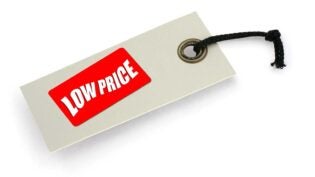
Here’s how to make the sparks fly if you’re considering a freemium pricing strategy for your goods or services:
1. Make sure they get you
In the restaurant industry, foie gras and truffles are two of the most expensive luxury items that can go on a menu. For this reason, even the best kitchens tend to use them sparingly, in small amounts and at staggering prices. Famed chef of The French Laundry, Thomas Keller, went against this trend, giving his guests generous portions of these ingredients, so that they would “get it.”
It doesn’t matter how valuable your online service is or how well you present it—if you don’t offer enough up front, then customers will feel dissatisfied and walk away. Make sure that the lite version of your software stands on its own, that, say… the storage capacity for a cloud-based file sharing service is enough for customers to find it useful, to fall in love with your company and forget what life was like before meeting.
Why leave room for second guessing when it comes time to upgrade? You’re not going to convince anyone to pay more if they’re not wowed by what they start with. Don’t skimp on the good stuff.
2. Don’t overdue it either
The ideal freemium arrangement for the seller is to offer the perfect amount of a service to entice the buyer into purchasing premium services or features. Without being deceptive or withholding, this means pitching your bests at those who will appreciate it at a reasonable price. Premium services should be just that—high-quality, more sophisticated options that warrant fees.
Look at Box, Dropbox, Shopify, or WordPress for examples of companies that have turned freemium businesses into successes worth over a billion dollars each.
3. Pitch to the right partners
The appeal of the freemium model is that companies can sample. They don’t have to overhaul their business or train staff or make a huge investment before knowing if software works for them. Likewise, this makes it much easier for businesses to develop leads organically (without a massive salesforce, it’s worth adding). Business is already there, like the farm system in professional sports, with a natural progression of players advancing toward the top.
Consider if your market solution fits this paradigm. If you’re asking a team to implement a new CRM solution, that’s asking a lot. The team will need all the features and support you have to offer, so it’s not practical for them to build gradually or for you to charge nothing. The model doesn’t work for everyone.
That said, more and more companies are choosing the freemium model. With great products to offer, upselling takes care of itself. As long as the passion is there and interests stay aligned.
This article was originally published by Killer Startups
Author: Keith Liles is a freelance writer who loves travel, music, wine, hiking, poetry, and just about everything. He practices saying “yes” to life vigorously, rehearsing for the phone call when he’s asked to tour with Bruce Springsteen and the E Street Band. Follow Keith on Twitter @KPLiles.
2541 Views












